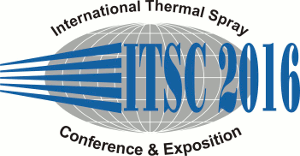
|
| Abstract No.: |
|
Scheduled at:
|
Thursday, May 12, 2016, Room 3E 1:40 PM
Medical Industry
|
|
| Title: |
Refining nano-topographical features on bone implant surfaces by altering surface chemical compositions
|
|
| Authors: |
Guocheng Wang* / Shenzhen Institute of Advanced Technology, CAS, Guangdong
Xiaobing Zhao / School of Materials Science and Engineering, Changzhou University, China
Hala Zreiqat/ The University of Sydney, Australia
|
|
| Abstract: |
Plasma spraying technique has gained great importance in biomedical fields. Plasma sprayed hydroxyapatite coated implants have been commercialized and widely used in clinic for hip replacement and teeth reconstruction. It is well-accepted that the current-used plasma sprayed coatings for biomedical use have some drawbacks which results in a suboptimal overall performance. A large amount of studies have been carried out to develop new products by simply changing the coating material, however, seldom of them focused on the exploration of how to make innovative application of this traditional surface techniques for better serving the development of new biomedical coatings.
In our previous work, we made an attempt to refine the nanotopographic features of the plasma sprayed biomedical coating by adjusting the chemical composition of the spraying materials, which is ascribed to the alternation in the heat condition of the fast solidification process. Briefly, we used Nb2O5 to change the surface chemical composition of the plasma sprayed TiO2 coatings. The refinement of nanotopographic features is dose-dependent, and the most prominent effect is found at the 50wt% Nb2O5 doping where a solid solution with a formula of Ti0.95Nb0.95O4 was formed. The introduction of Nb2O5 into the TiO2 matrix also enhanced the corrosion resistance of TiO2 coatings and improved the bonding strength between the coating and the substrate, which are also dose-dependent. Moreover, it was found that cells on the 50wt% Nb2O5/TiO2 coating with a nanoplate structure showed the highest viability over the culture period. This study demonstrates the potential use of TiO2 coatings doped with Nb2O5 for enhancing the bioactivity of the currently used metallic dental and orthopaedic implants.
|
|
